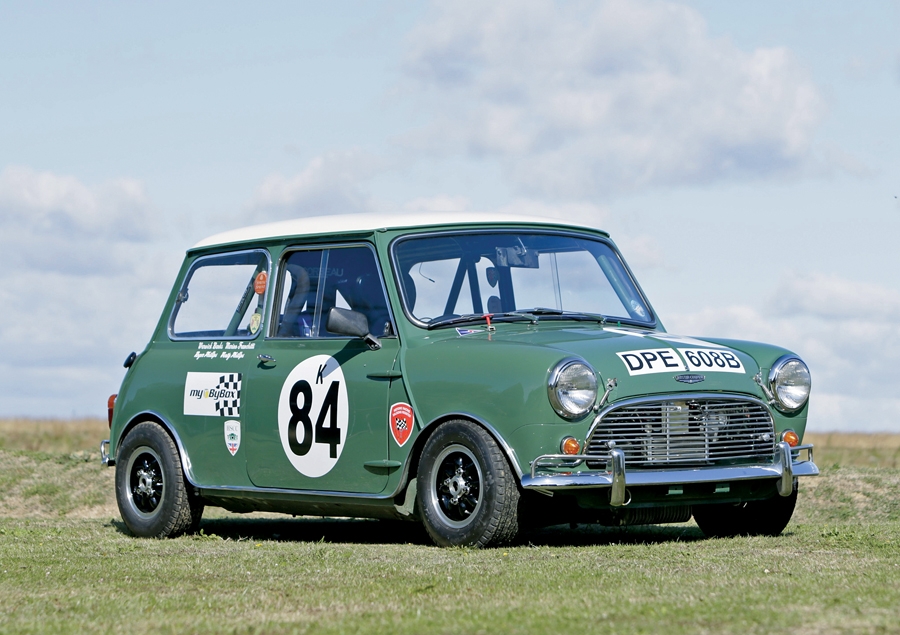DPE 608B was purchased new by the current vendor on August 12, 1964, from BMC dealer Jackson’s Garages of Godalming, Surrey. The Mini was primarily his road car but was raced whenever the opportunity arose. Early outings included Rufforth and Cadwell Park, both in September 1964, and Goodwood on March 13, 1965 (original program on file).
The Mini then passed through the hands of various other owners. In 2004, the vendor was able to buy it from Gordon Cameron, who had been campaigning the car very successfully in historic rallies. Its previous owners were almost all members of the Bognor Regis Motor Club, and the Mini had been in competition for most of its life.
The vendor, reunited with the Mini, commissioned the car’s total restoration in anticipation of an invitation to return to Goodwood for the 2005 Revival meeting, which was duly received. Following the Revival, it was decided to enter the HSCC pre-’66 Touring Car Championship in 2006 and, after winning seven out of the nine races, the Championship was in the bag. DPE 608B and the vendor were champions again in 2007.
Following a major off at Spa Francorchamps in September 2007, caused by a severed brake line, the car was rebuilt by The Brooklands Motor Company.
The car and its owner were invited back to Goodwood for the 2009 Revival. [The St. Mary’s Trophy saloon car race that year was for Minis only, to celebrate 50 years of the pocket rocket.] They again entered the HSCC race at Spa that year.
In 2010, the vendor spent the season racing with his daughter in the Mighty Mini Series, and it was not until 2011 that he returned to the HSCC Touring Car Championship, which he won again in that year and also in 2012.
“DPE” has brought its owner four Championships with the HSCC and four Championships with the HRSR — quite a trophy haul for a senior citizen. Since 2005, a total of 50 races have been entered in the U.K., France and Belgium, resulting in 26 wins and 13 other podium places, as well as 16 fastest laps. Additional documentation consists of restoration invoices, old-style logbook, Heritage Certificate, current MoT/tax and V5C registration document.
The car now boasts Swiftune’s finest specification of engine and transmission, which has one full season behind it. The engine was fully refreshed by Swiftune just one event ago, and this highly competitive Mini is presented race-ready for another season.

